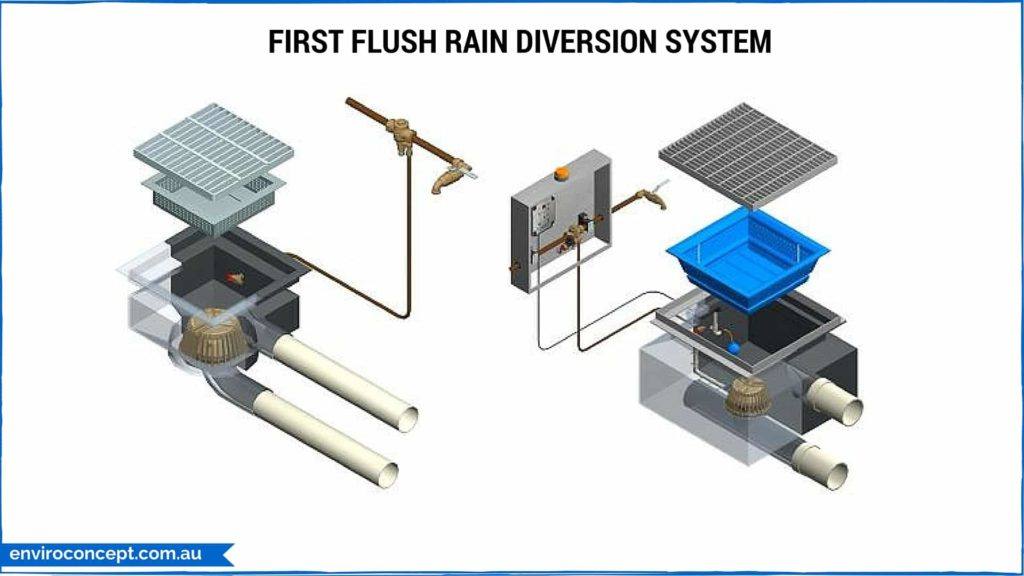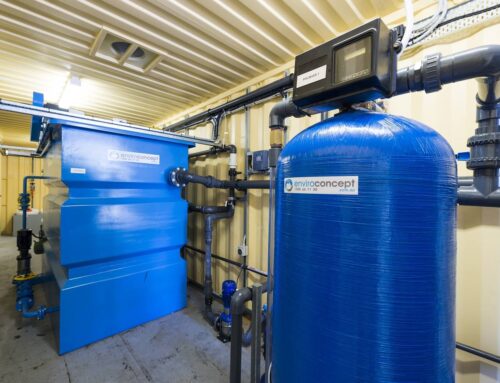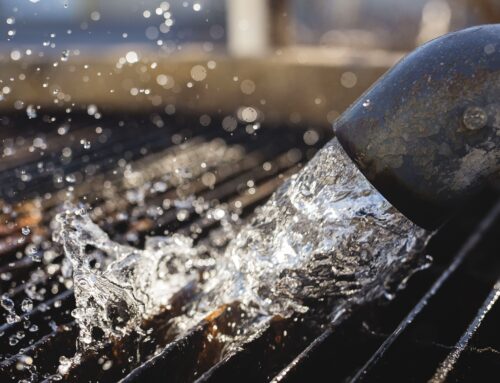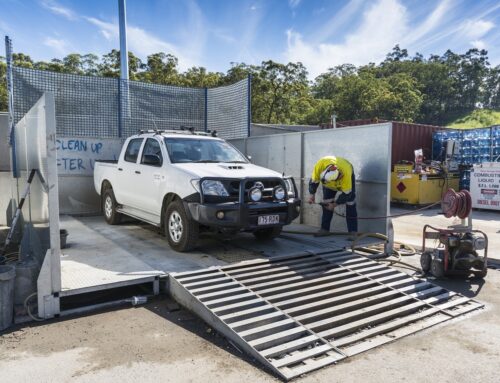Owners and operators of wash bay facilities have to identify and manage potential for stormwater pollution onsite. Council regulations require them to undertake all activities in a way that ensures stormwater is protected from pollutants such as wash water, detergents, cleaning agents, grease, oil and general rubbish. Finding the right treatment is important in meeting the compliance requirements of councils across Australia. Keeping this in mind, Enviro Concepts offers a range of storm water treatment and rain diversion systems to meet the needs of our clients.
What is Stormwater & What Are the Regulations for Businesses?
Stormwater is rainwater that flows over outdoor surfaces into gutters and stormwater drains. This water is not treated and flows directly to our creeks, rivers, groundwater and oceans. Stormwater should therefore only contain clean rainwater, and no pollutants.
The stormwater system is protected by a number of different laws, including the Environment Protection Act 1993 (the Act), the Environment Protection (Water Quality) Policy 2003 (The Water Quality Policy), the Local Government Act 1934, the Development Act 1993 and the Public and Environmental Health Act 1987. **
Any business which leaves dust, dirt, mud, grime and toxic substances on the ground are required to become storm water compliant. Some of these businesses could include:
- Process factories
- Large storage yards
- Service stations
- Heavy vehicle or equipment wash downs
- Commercial factories
- Fleet wash bays
What Kind of Pollutants Can Be in Your Storm Water?
Waste water and rainwater run-off from vehicle, machinery and equipment wash bays may contain the following pollutants
- Cleaning agents
- Oil, grease and lubricants
- Fertilisers
- Heavy metals
- Dirt, silt, mud
For environmental of best practice, wash water containing any cleaning agents or toxic pollutants should not be discharged directly to the stormwater system. Rainwater should be restricted from flowing through the wash bay and into the storm water drain.
What Can You Do to Prevent Stormwater Pollution from Your Washbay?

Appropriate steps should be taken while designing the wash bay. Here is a quick checklist for a good wash bay design:
- Appropriate wash bay size and a roof over the wash bay– The wash bay itself should be of sufficient size to prevent any over-spray or splashes from cleaning activities falling out of its confines. Enviro Concept’s modular wash bays can be customised for size and walls of different heights can be added as required. A roof will prevent rainwater from entering and flowing through the system.
- Rain Diversion System – If, however, the washbay is not covered by a roof, a rain diversion system can be installed to ensure that storm water and trade waste do not mix. These systems also ensure that your wash down bays are compliant with water authorities or councils. Rain Diversion system can be of two types. A demand driven rain diversion system will send all process water to the treatment system and the rain water to the stormwater drain, this system requires processes in place to ensure no sediment or waste is left on the washpad after use. Our approved First Flush Demand Driven Rain Diversion system works by taking first 10 ml of rain that falls on the pad and sends that to the treatment system, allowing the remaining water to flow to the storm water system.
For more information on rain diversion system, visit our page.
If you have any questions on stormwater management or wash bay compliance, contact us.
**Reference: www.epa.sa.gov.au




